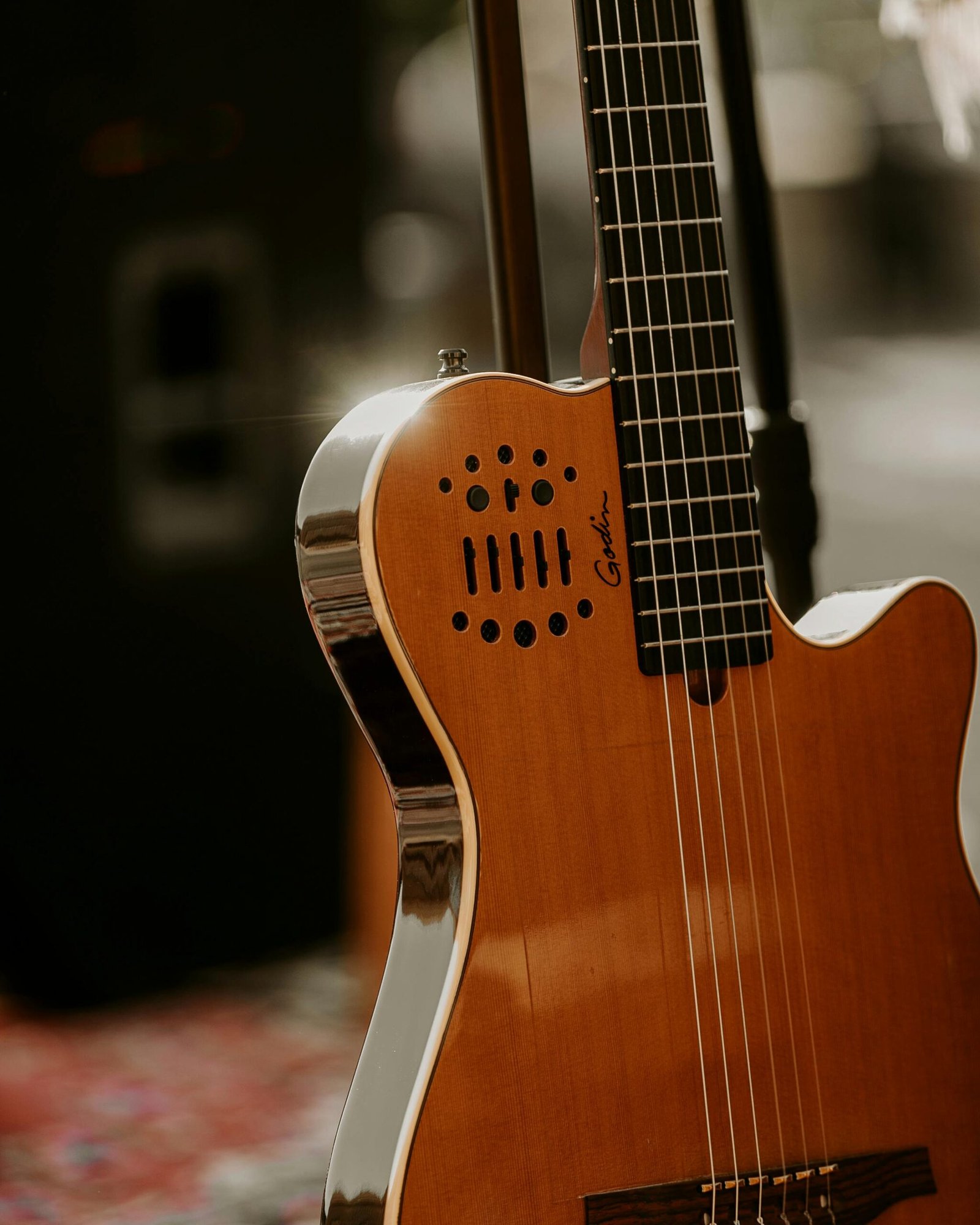Have you ever experienced that frustrating buzz sound when playing your guitar? You know, that annoying noise that seems to ruin every chord and note you try to play? Well, the good news is that you don’t have to put up with it. In fact, there are steps you can take to set up your guitar in a way that reduces or even eliminates fret buzz. So, if you’re tired of that buzzing getting in the way of your music, keep reading to find out how you can achieve a buzz-free guitar setup.

Understanding Fret Buzz
What is fret buzz?
Fret buzz refers to an unwanted buzzing or rattling sound produced by a guitar when a string makes contact with a fret while vibrating. It can be frustrating for any guitarist, as it affects the playability and overall tone of the instrument. Fret buzz can occur on any guitar, whether it’s an acoustic, electric, or bass guitar.
Causes of fret buzz
Fret buzz can be caused by various factors, including:
-
Improper neck relief: If the neck of the guitar has too much or too little curvature, it can lead to fret buzz. The neck relief affects the overall action of the guitar, and when it is not properly adjusted, the strings may come into contact with the frets, causing buzzing.
-
Uneven or worn frets: Over time, frets can become worn down or unevenly leveled. This can lead to fret buzz, especially when playing certain notes or chords.
-
Issues with the nut: The nut, located at the top of the neck, has slots for each string. If these slots are too shallow, too deep, or not properly spaced, it can cause the strings to vibrate improperly and create buzzing.
-
Problems with the bridge: The bridge of a guitar is responsible for holding the strings in place and determining their height and action. If the bridge is not properly adjusted, it can cause fret buzz.
Assessing the Guitar
Before attempting to fix fret buzz, it’s important to properly assess the guitar to identify the specific areas that require adjustment.
Checking the neck relief
The first step in assessing the guitar is to check the neck relief. This can be done by pressing down the first and last frets of a string and observing the gap between the string and the frets in the middle of the neck. If there is a noticeable gap or the string touches the frets, the neck relief may need to be adjusted.
Inspecting the frets
Next, inspect the frets for any signs of wear or unevenness. This can be done by visually examining the frets and running a finger along the edges to feel for any inconsistencies. If any frets are worn down or uneven, they may need to be leveled.
Examining the nut
Check the nut for any visible damage or improper string slots. Ensure that the slots are properly spaced and not too shallow or too deep. If the nut is damaged or the slots are not correctly shaped, it may need to be replaced or filed.
Evaluating the bridge
Lastly, evaluate the bridge for any issues with height and action. The strings should have consistent spacing and should not be too low or too high off the fretboard. If the bridge is not properly adjusted, it may require modification or fine-tuning.
Adjusting the Neck Relief
To address fret buzz caused by improper neck relief, the truss rod can be adjusted. However, it is crucial to proceed with caution, as improper adjustments can damage the neck.
Tools required
Before making any adjustments, gather the necessary tools, including a proper truss rod wrench or Allen key, which matches the truss rod nut size on your guitar.
Loosening or tightening the truss rod
To adjust the neck relief, locate the truss rod adjustment point. This is typically located at the headstock end of the neck, either inside the soundhole (for acoustic guitars) or on the headstock itself (for electric guitars). Insert the wrench or Allen key into the adjustment point and turn it clockwise to tighten the truss rod, reducing neck relief, or counterclockwise to loosen the truss rod, increasing neck relief. Make small adjustments and recheck the neck relief after each turn to avoid overadjusting.
Leveling the Frets
Uneven or worn frets can cause fret buzz, especially when playing certain notes or chords. Leveling the frets can help eliminate this problem. However, this task requires precision and is best left to a professional unless you are confident in your skills.
Identifying uneven frets
To identify uneven or worn frets, visually inspect the frets and look for any signs of wear, such as divots or flattening. Use a straight edge, such as a level or fret rocker, to check for any high or low spots on the fretboard. If you find any significant inconsistencies, it’s best to consult a professional luthier.
Utilizing a leveling beam
If you have experience and the necessary tools, leveling the frets can be done using a leveling beam. This tool is typically a long, flat bar with abrasive material attached to its surface. By carefully and evenly sanding the frets with the leveling beam, you can ensure that they are all at the same height and eliminate any high or low spots.
Sanding and reshaping the frets
If your frets are significantly worn or uneven, it may be necessary to sand them down and reshape them. This should only be done by an experienced professional, as it requires specialized tools and expertise to maintain the integrity of the frets.

Working on the Nut
Problems with the nut can also contribute to fret buzz. Checking and adjusting the nut slots can help alleviate this issue.
Checking nut slots
Inspect the nut slots to ensure that they are properly sized and shaped for each string. The strings should fit snugly in the slots without being excessively tight or loose. Additionally, check for any signs of binding or pinching that may cause the strings to vibrate inconsistently.
Filing or widening the slots
If the nut slots are too shallow, fret buzz can occur. To address this, carefully file or widen the slots using a nut file or appropriate-sized needle file. Make sure to file each slot individually, and periodically check the string height and buzzing to ensure proper adjustment.
Replacing the nut
If the nut is damaged beyond repair or the slots are severely worn, it may be necessary to replace the nut entirely. This is a delicate task and should ideally be performed by a skilled luthier to ensure proper fit and alignment.
Dealing with the Bridge
Issues with the bridge height and action can also cause fret buzz. Adjusting the bridge can help alleviate this problem.
Inspecting bridge height and action
Examine the bridge to ensure that it is level and properly aligned. The strings should have consistent spacing and height above the fretboard. If the bridge is tilted or the strings are too low or too high off the frets, adjustments may be needed.
Adjusting saddle height
To adjust the saddle height, locate the individual saddle pieces on the bridge. These can usually be adjusted by turning small screws or bolts. Raise or lower the saddles gradually to achieve the desired string height and eliminate fret buzz. It’s important to maintain consistent string spacing while making these adjustments.
Modifying the bridge
In some cases, modifying the bridge may be necessary to address persistent fret buzz. This could involve reshaping the bridge or replacing it altogether. It’s advisable to consult a professional luthier for such modifications to ensure proper results.

Ensuring Proper String Action
Proper string action is essential for minimizing fret buzz and achieving optimal playability. Measuring and adjusting the string height can help achieve this.
Measuring string action
String action refers to the height of the strings above the fretboard. Measure the string action at various points along the neck using a feeler gauge or specialized string action ruler. Compare the measurements to recommended guidelines for your guitar type and adjust as necessary.
Adjusting the string height
To adjust the string height, locate the individual saddles on the bridge or the height-adjustment screws on the tailpiece. Gradually raise or lower the saddles or screws to achieve the desired string height. Remember to make small adjustments and check for any buzzing after each change.
Eliminating Buzz with a Setup
If you’re struggling to address fret buzz on your own, consider getting a professional guitar setup.
What is a guitar setup?
A guitar setup involves a comprehensive adjustment and optimization of various elements of the guitar to ensure optimal playability and performance. A professional luthier will assess and adjust factors such as neck relief, fret leveling, nut slots, bridge height, and string action, among others. A setup can greatly improve the playability of your guitar and eliminate fret buzz.
Finding a professional luthier
To find a professional luthier for a guitar setup, consider asking for recommendations from other musicians or music stores in your area. Look for someone with experience and positive reviews. A skilled luthier will have the knowledge and expertise to properly assess and address any issues causing fret buzz on your guitar.
Playing Technique and Fret Buzz
While setup and adjustments can greatly reduce fret buzz, it’s also important to consider your playing technique.
Applying proper finger pressure
One common cause of fret buzz is excessive finger pressure on the strings. When pressing down too hard, the strings can come into contact with the frets, causing unwanted buzzing. Try to apply just enough pressure to produce a clean tone without pressing harder than necessary.
Using lighter gauge strings
Another factor to consider is the gauge of your guitar strings. Lighter gauge strings require less force to fret and are less likely to cause buzzing. Experiment with different string gauges to find the ones that suit your playing style and minimize fret buzz.
Preventing Fret Buzz
While it’s inevitable to completely eliminate the possibility of fret buzz, regular cleaning and maintenance can help prevent it from occurring frequently.
Regular cleaning and maintenance
Keep your guitar clean by wiping it down after each use, especially the fretboard. Use a clean, lint-free cloth and guitar-specific cleaning products if necessary. Regularly check the strings for dirt or grime buildup, as this can affect their vibrations and cause buzzing.
Monitoring humidity levels
Changes in humidity can affect the wood of your guitar, leading to changes in the neck relief and fret buzzing. To prevent this, store your guitar in a controlled environment with stable humidity levels. Use a hygrometer to monitor the humidity and consider using a humidifier or dehumidifier as needed.
By understanding the causes of fret buzz and learning how to assess, adjust, and maintain your guitar properly, you can significantly reduce or eliminate this common annoyance. Whether through DIY adjustments or seeking the help of a professional luthier, ensuring proper setup and employing good playing techniques will enhance your overall playing experience and allow your guitar to perform at its best.

Jonse Becker, a seasoned guitarist and music aficionado, founded his blog to share his passion for all things guitar. With over 20 years of experience, Jonse expertly navigates the realms of vintage acoustics and modern electrics, offering readers a rich blend of technical knowledge, history, and industry trends.
